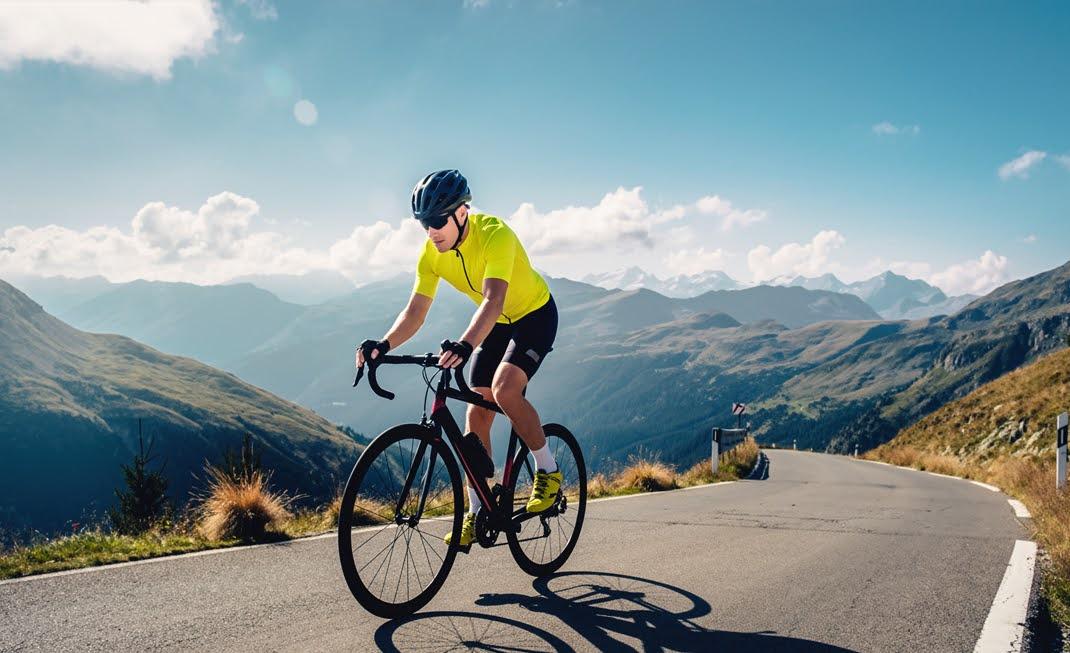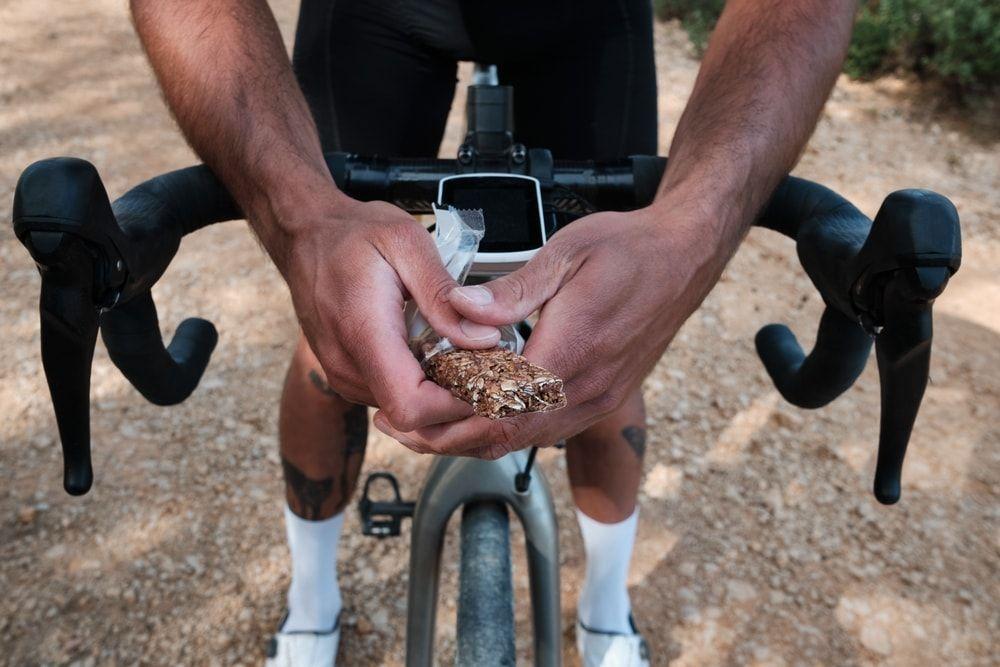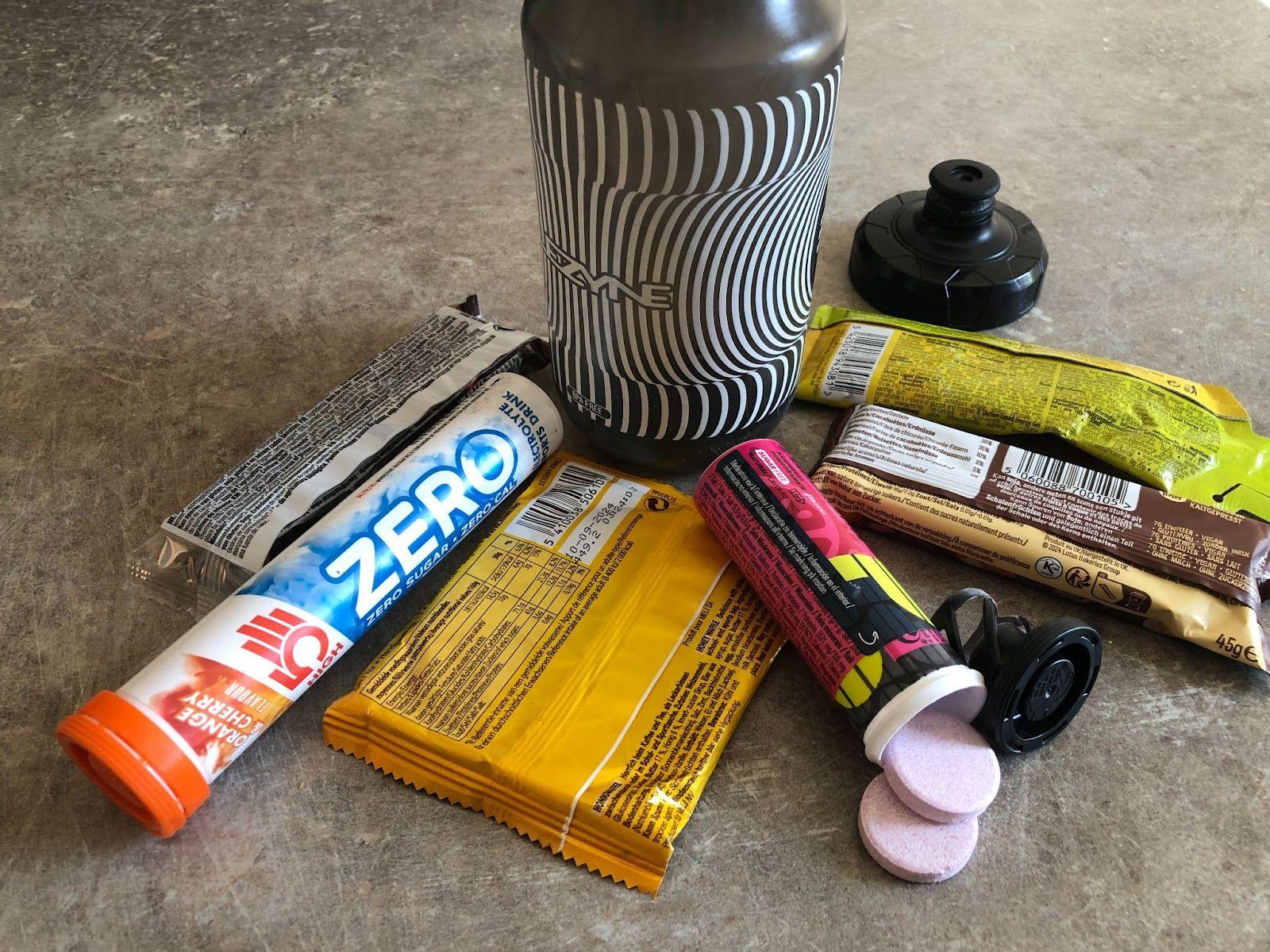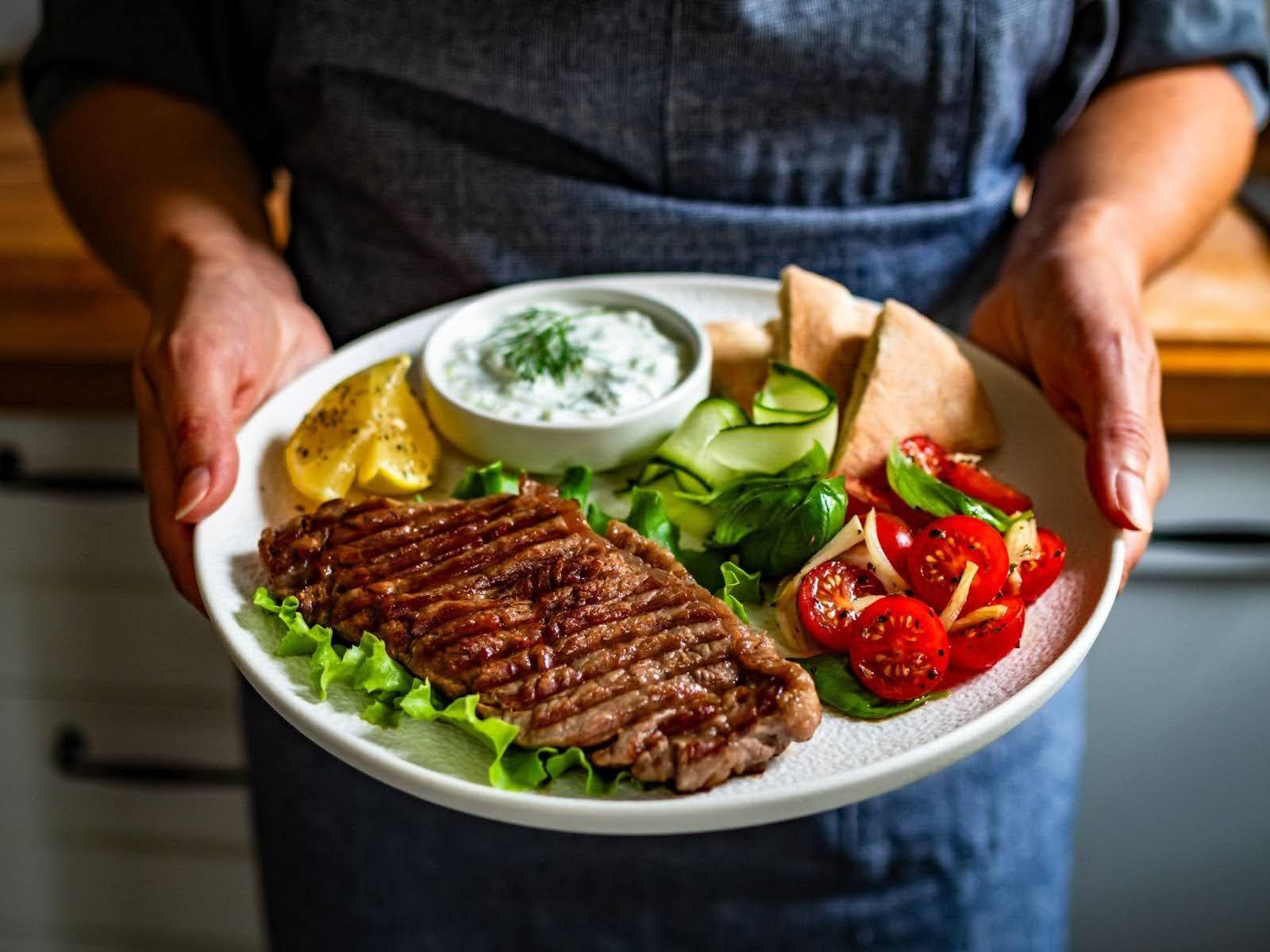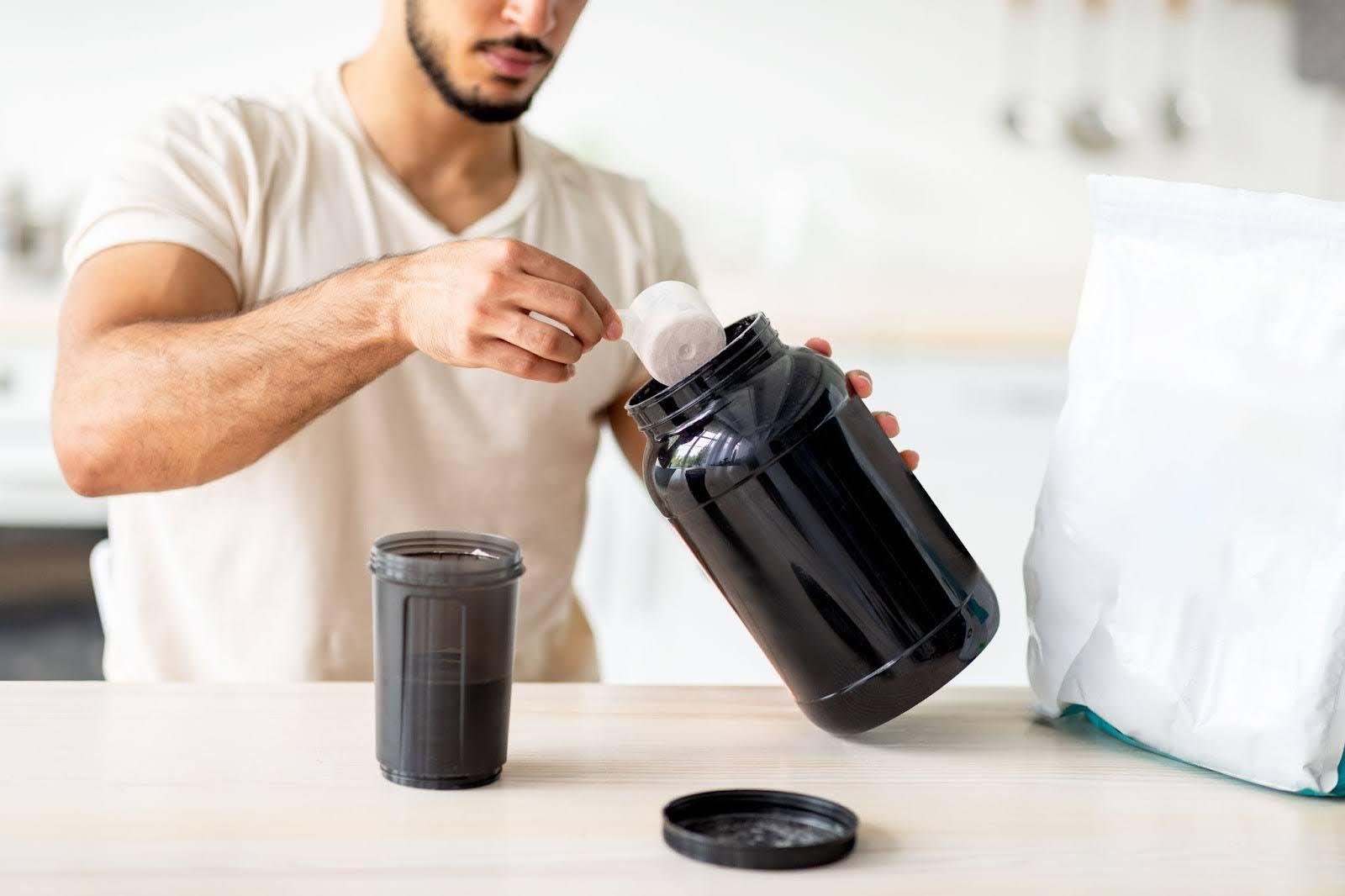Why Weight Matters in Cycling
If you’ve ever rolled into a climb and felt like you were towing a caravan, you already know that weight matters. When the road tilts skyward, your power-to-weight ratio (W/kg) becomes the invisible referee deciding whether you’re floating or floundering. Push 280 W at 65 kg and you’re at 4.3 W/kg; do the same power at 80 kg and you’re at 3.5 W/kg - same legs, very different experience. But this isn’t about chasing the smallest number on the scale. It’s about finding that sweet equilibrium between power, health, and longevity.
Too many riders focus solely on losing kilos. I’ve coached some who dropped weight but also dropped power, morale, and immune strength. The key is managing weight intelligently, not aggressively. And ROUVY helps you do just that - offering structure, consistency, and control that the open road rarely gives you.
Cycling is unique in that physics is brutally honest. You can’t cheat gravity or aerodynamics, but you can manage the variables. Body composition is one of those variables - and unlike terrain or weather, it’s something you can control with planning, patience, and good data. The trick lies in balancing output and intake so your body becomes a reliable, repeatable engine rather than a fragile one-ride wonder.
Power-to-Weight Ratio Explained
The formula is simple:

If your FTP is 320 W and you weigh 70 kg, that’s 4.57 W/kg - a solid benchmark for fast club riders and climbers. This figure determines how efficiently you move uphill, but remember: the best way to improve it isn’t by starving - it’s by getting stronger first.
Two riders might weigh the same, but the one producing more power wins the climb every time. Focus on building watts through quality training, and the weight will often follow naturally. It’s a double win - performance without punishment.
Smart Weight Management for Cyclists
Energy Balance — The Real Equation Forget fad diets; weight control comes down to one honest equation: calories in versus calories out. But cyclists complicate it by training hard and recovering poorly. If you want to lose weight safely, create a small, consistent deficit — 300–500 kcal daily - rather than a drastic one. Train, eat well, and rest. The magic happens in the balance.
Healthy Deficits & Safe Loss Rates Crash dieting is the surest way to tank performance. Aim for no more than 0.5 kg loss per week. Any faster and you’re likely losing muscle, not fat. If you’re perpetually hungry, irritable, or under-recovered, your deficit’s too deep.
Fueling Workouts - Non-Negotiable Never starve a session. Training is the stimulus, but fuelling is what turns stress into adaptation. Under-fuelled rides blunt gains and heighten fatigue. A rider who fuels properly not only trains harder - they also recover faster, stay healthier, and maintain power during weight loss.
Nutrition for Weight Control
Role of Carbs, Protein, and Fats Let’s clear something up straight away: carbs are not the enemy - they’re your fuel. Somewhere along the line, the world got obsessed with protein. These days, everything’s “high-protein” - cereal, yoghurt, even chocolate bars proudly shouting about their protein content like it’s a medal of honour. Don’t get me wrong, protein matters, but it’s the building material, not the petrol. You don’t win races by eating plasterboard. For cyclists, smart nutrition is about balance, not restriction.
Carbohydrates: Power your rides and drive high-quality training. They’re your octane rating — the stuff that actually makes the engine go.
Protein: Repairs muscle and supports recovery - essential, but secondary to fuel.
Healthy fats: Keep hormones, brain function, and metabolism running smoothly. Ignore them, and you’ll feel it in your mood and performance.
From years of coaching, I’ve seen a stark difference between pros and amateurs. The pros eat broadly - a rainbow of plants, whole foods, good carbs and textures. They eat with colour, not caution. Their diets are rich in fruit, veg, pulses, and minimally processed grains, with barely any ultra-processed food. The result? Higher fibre intake, stronger immunity, and a more resilient gut microbiome.
That gut diversity isn’t just about digestion - it’s performance insurance. A healthy microbiome supports immune response, reduces inflammation, and improves nutrient absorption. Meanwhile, many amateurs rely on convenience: bars, shakes, “quick fixes.” It’s fuel, yes, but often the nutritional equivalent of cardboard.
One of the easiest upgrades you can make? Swap refined carbs for wholegrains - particularly wholegrain rice and pasta. They’re richer in fibre, steadier on blood sugar, and keep you satisfied longer. Think of them as “endurance carbs”: they release energy smoothly and consistently.
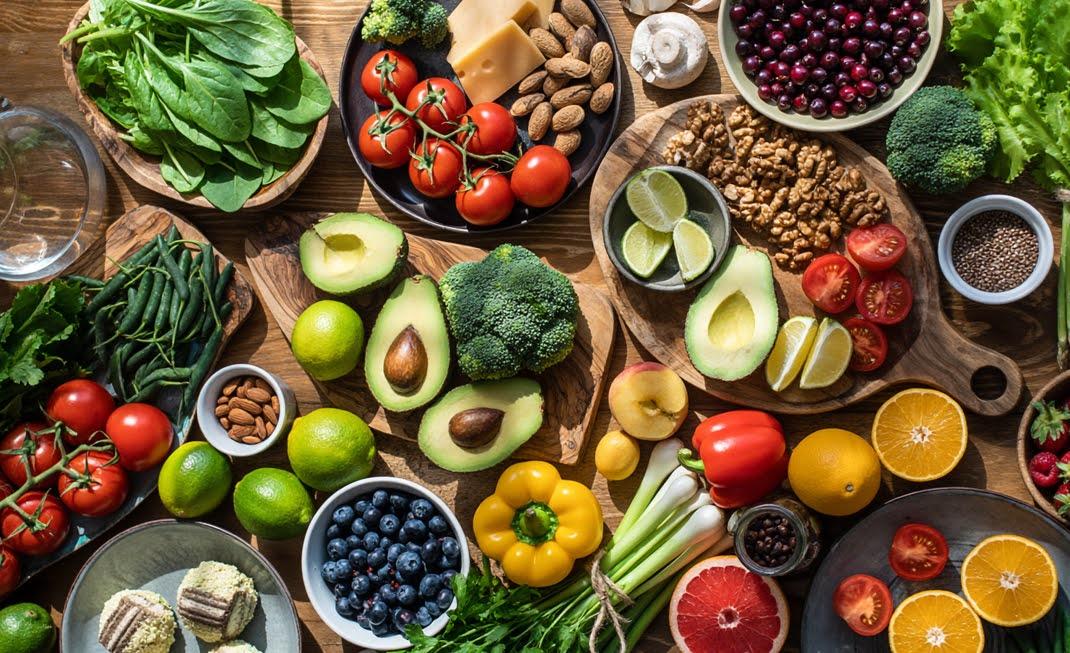
Timing: Pre-, During & Post-Ride
- Pre-Ride: Eat something 60–90 minutes before training - light carbs with a touch of protein.
- During: Fuel any ride over 90 minutes. Under-fuelling mid-ride is sabotage, not strategy.
- Post-Ride: Within the hour, aim for a 3:1 ratio of carbs to protein to replenish glycogen and jump-start recovery.
Homemade Fuel: The Better Energy Bar
It’s often fun - and far healthier - to make your own energy bars. You can use completely natural ingredients, tailor the recipe to your taste, and avoid all the ultra-processed fillers found in shop-bought options. Oats, honey, dates, nuts, seeds, coconut oil - simple, powerful ingredients that actually nourish. They keep well in the fridge or freezer, ready for training or racing, and there are plenty of brilliant recipes on YouTube to experiment with. Once you find a version that works for you, it’s easy to scale it for race day. The best part? You control exactly what’s inside - the calories, the flavour, and the fuel quality. It’s a small step that gives you big ownership over your nutrition.
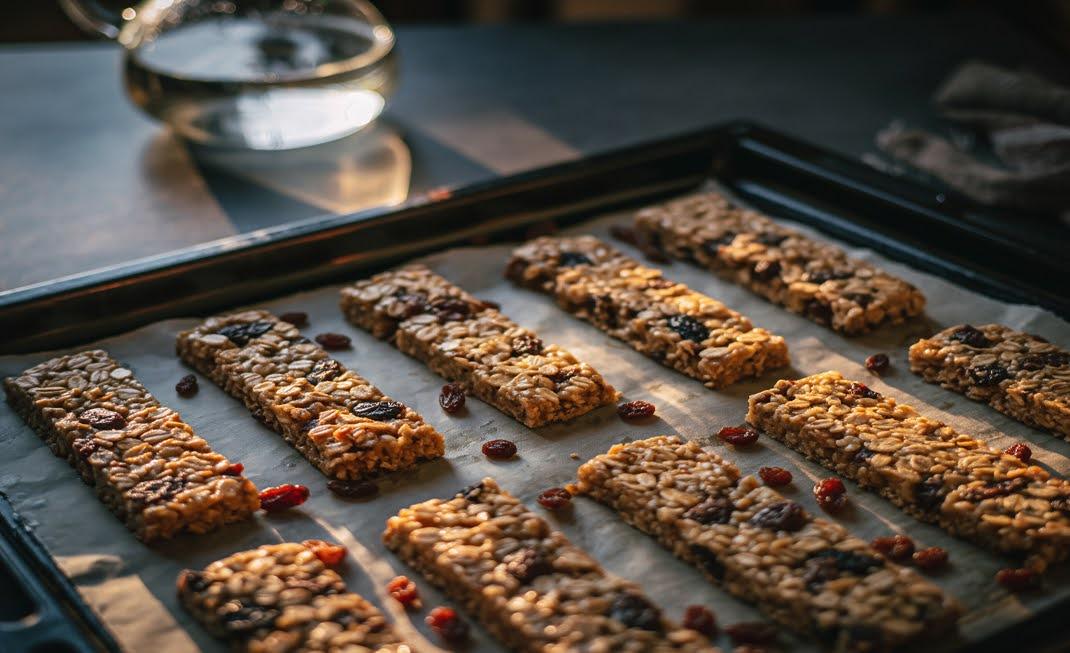
Tracking What You Eat
It’s never been easier to understand what’s actually going into your body. There are now several excellent apps that track calorie intake, macronutrients, and food quality right from your phone. They’re not there to police your eating - they’re there to educate you. Seeing how carbs, protein, and fat balance across a day can be eye-opening, especially when you compare it to your training load. Used sensibly, these nutrition calorie tools can help you spot gaps, prevent under-fuelling, and fine-tune your strategy without the guesswork.
Hydration & Weight Balance
Dehydration reduces power output, delays recovery, and confuses hunger signals. Keep a bottle close and sip throughout the day. Add electrolytes for sessions over an hour - water alone won’t replace what sweat removes.
The 70/30 Rule Diet changes are among the hardest lifestyle shifts to master. Perfection isn’t required - consistency is. Aim for roughly 70% of your daily intake from carbohydrates and around 30% from protein and healthy fats combined. That balance gives your body the energy it needs to train, recover, and adapt without running on empty.
And a final truth from the pros: carbs are king. Protein repairs; carbs power. Don’t cut them - choose better ones, time them well, and train like a rider, not a dieter.
Indoor Cycling & Weight Management
ROUVY turns indoor training into a performance lab. Controlled conditions, structured workouts, and realistic gradients (try the iconic climbs) mean you can train precisely — matching energy expenditure and nutrition with clarity.
Why It Works Indoors, you can:
- Control duration, intensity, and gradient.
- Track calorie burn accurately.
- Train consistently regardless of weather or daylight.
That control builds accountability. It’s no longer guesswork - you’re shaping your power-to-weight ratio on purpose.
But there’s more. ROUVY’s training analytics let you monitor trends in heart rate, power, cadence, and recovery to ensure you’re burning efficiently - not just endlessly. Combine this with your nutrition tracking app, and you can create a feedback loop: energy out (ROUVY) matched to energy in (your diet log). Over time, you’ll see patterns - where you’re under-fuelled, where recovery is lacking, or when your body composition is changing too quickly.
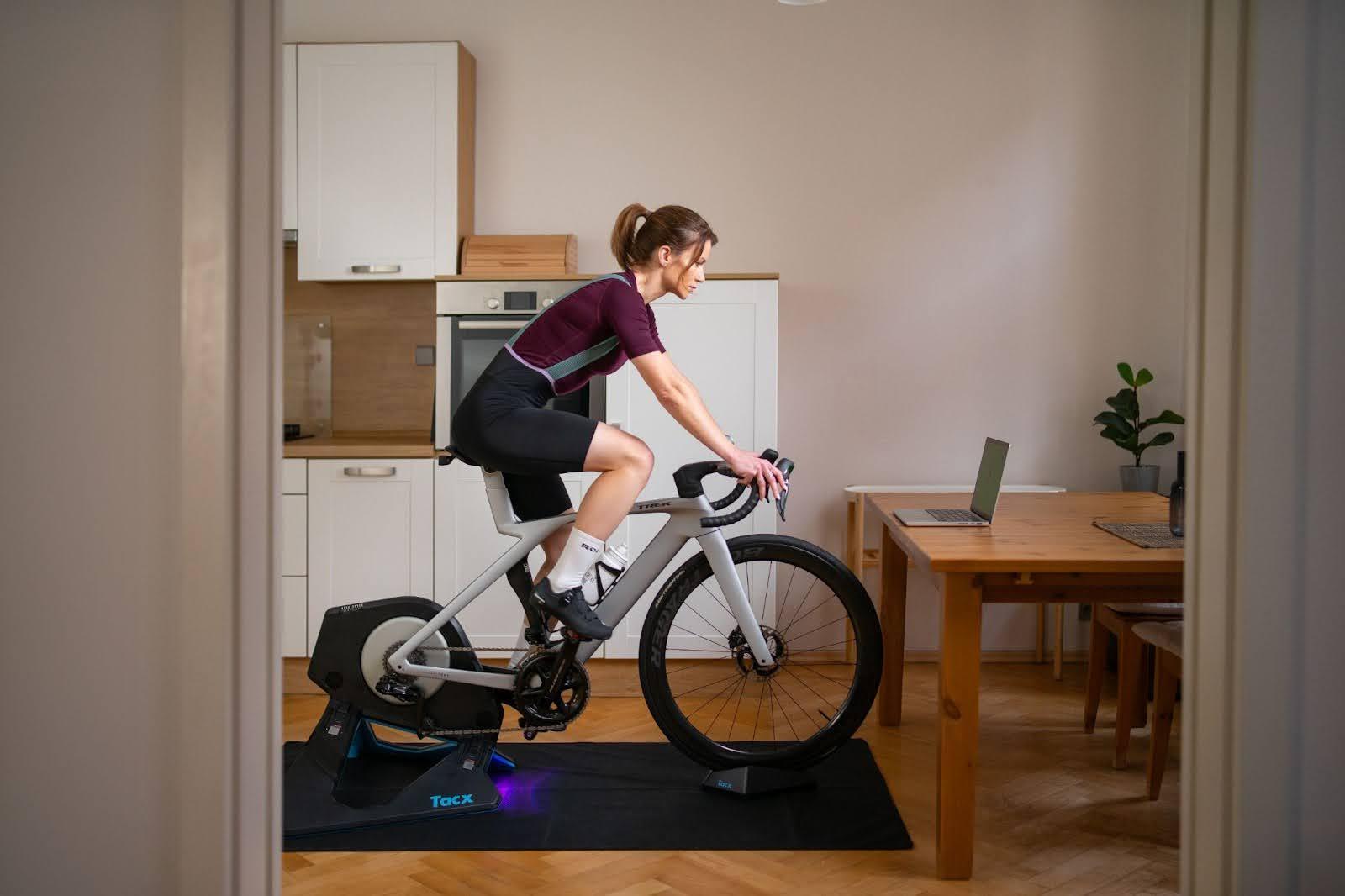
Use that insight to train smarter: identify your fat-oxidation zones, target sessions for efficiency, and ensure your recovery rides are genuinely easy. With ROUVY, every data point becomes a coaching cue - a reminder that smart riders manage intensity, not just mileage. Consistency beats chaos, and ROUVY provides that rhythm. Think of it as your personal lab where you can test, tweak, and refine until performance and weight align.
When Lighter Isn’t Better
If you think lighter always equals faster, think again. Under-fuelling is the silent killer of performance. I’ve seen riders chase the scale until their power flatlined, recovery vanished, and illness crept in.
Understanding RED-S
Relative Energy Deficiency in Sport (RED-S) occurs when your energy intake doesn’t meet your body’s demands. The fallout can be far-reaching: disrupted hormones, chronic fatigue, slower recovery, weakened immunity, bone-density loss, and a noticeable drop in mood and motivation. In short, your body starts rationing energy, and performance pays the price. This isn’t an issue limited to elite riders - recreational cyclists are just as susceptible when training ramps up, but eating doesn’t. In men, RED-S can show up as low testosterone, poor sleep, or a fading drive to train; in women, it can cause irregular or absent periods. Studies suggest that up to 30% of female and 15% of male cyclists experience signs of low energy availability, often without realising it. The fix is rarely more supplements or recovery gadgets - it’s fuel, rest, and awareness.
Under-Fuelling On and Off the Bike
Off the bike, under-fuelling looks like skipped meals, low energy, or mood swings. On the bike, it’s that familiar fade - when your legs stop talking and start whispering “feed me.” Chronic under-fuelling doesn’t make you disciplined; it makes you slower. You’ll struggle to hit power targets, compromise recovery, and risk illness.
Psychologically, it’s a dangerous spiral. Cyclists are wired for control, and the numbers - calories, weight, watts - can become a trap. You can’t spreadsheet your way to health. The riders who thrive long-term are those who eat enough, rest enough, and treat food as a performance tool, not a punishment. A healthy mindset around nutrition keeps you training longer, racing stronger, and enjoying the sport for years rather than seasons.
Warning Signs
- Unexplained fatigue or declining power
- Frequent illness or injury
- Low mood or irritability
- Sleep disruption
- Rapid weight loss or obsessive tracking
- Menstrual irregularity (in females) or low libido (in males)
Healthy riders fuel their rides and recover with purpose. Thin isn’t fast — fuelled is fast.
Practical Coaching Tips for Sustainable Results
- Set realistic goals: Work within a healthy range, not a single “ideal” number.
- Track wisely: Use ROUVY analytics and nutrition apps together for periodic audits — not a daily obsession.
- Rest and recover: Weight management without recovery is just stress with better branding.
- Fuel for the work required: Adjust intake to match training load.
- Be patient: Sustainable change takes weeks, not days.
When you combine ROUVY’s precision data with simple tracking tools, you create a transparent training ecosystem. You’ll know what you burn, what you eat, and how it translates to performance. The more informed you are, the less you’ll rely on guesswork — and the more progress you’ll make.
If you use ROUVY alongside a calorie-tracking app, you can even observe how your energy availability shifts week to week. It’s an excellent way to prevent RED-S, identify fatigue early, and tailor fuelling to match the block ahead. Information empowers discipline; it doesn’t replace intuition.
Finding the Balance
At the end of the day, being a lighter rider isn’t the goal - being a better rider is. Smart training, balanced nutrition, and consistency beat restriction and guilt every time. Your power-to-weight ratio is a tool, not a dictator. The scale tells you mass; it doesn’t measure heart, resilience, or the satisfaction of cresting a climb knowing you did it the right way.
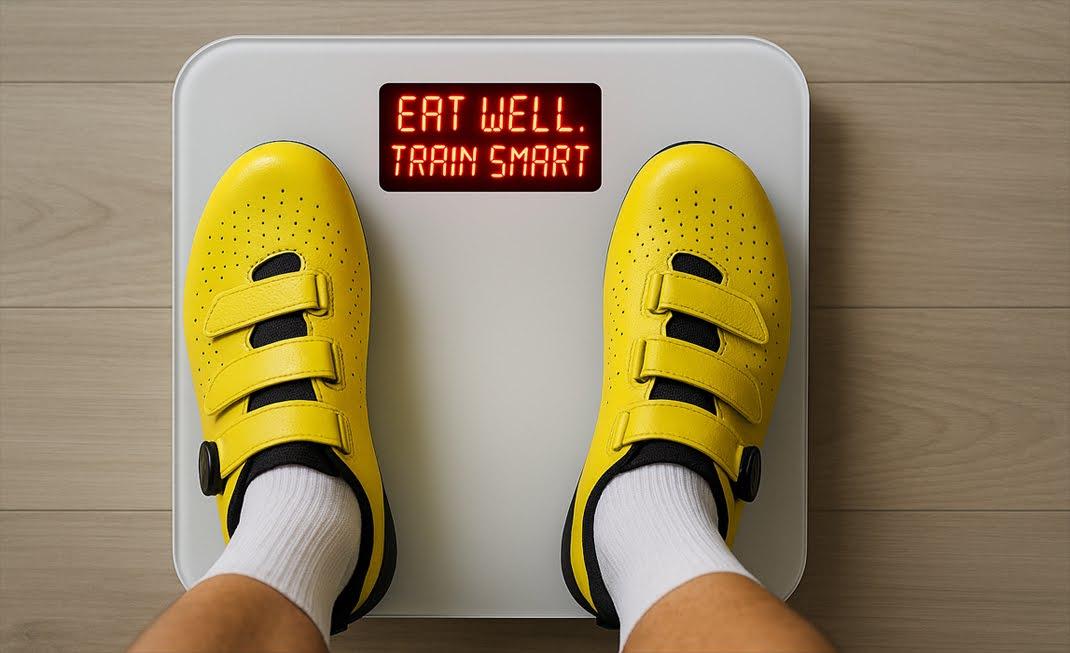
Cycling is a long-game sport, built on rhythm and self-respect. Chase power, nourish recovery, enjoy the process, and let weight settle where performance feels effortless. Train with intent, fuel with respect, recover with purpose — and use ROUVY as your performance partner to bring it all together.
Eat well. Train smart. Recover fully. The rest - your speed, endurance, and confidence - will take care of itself.
